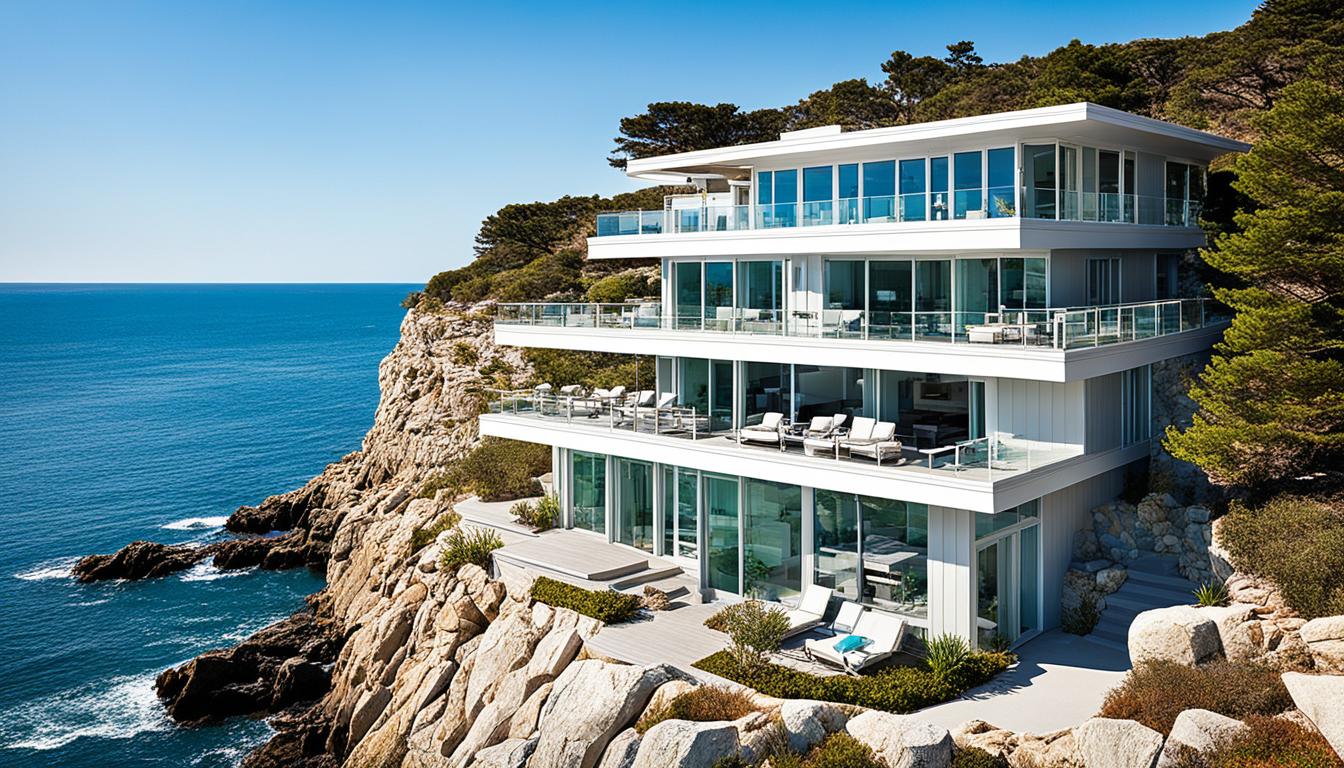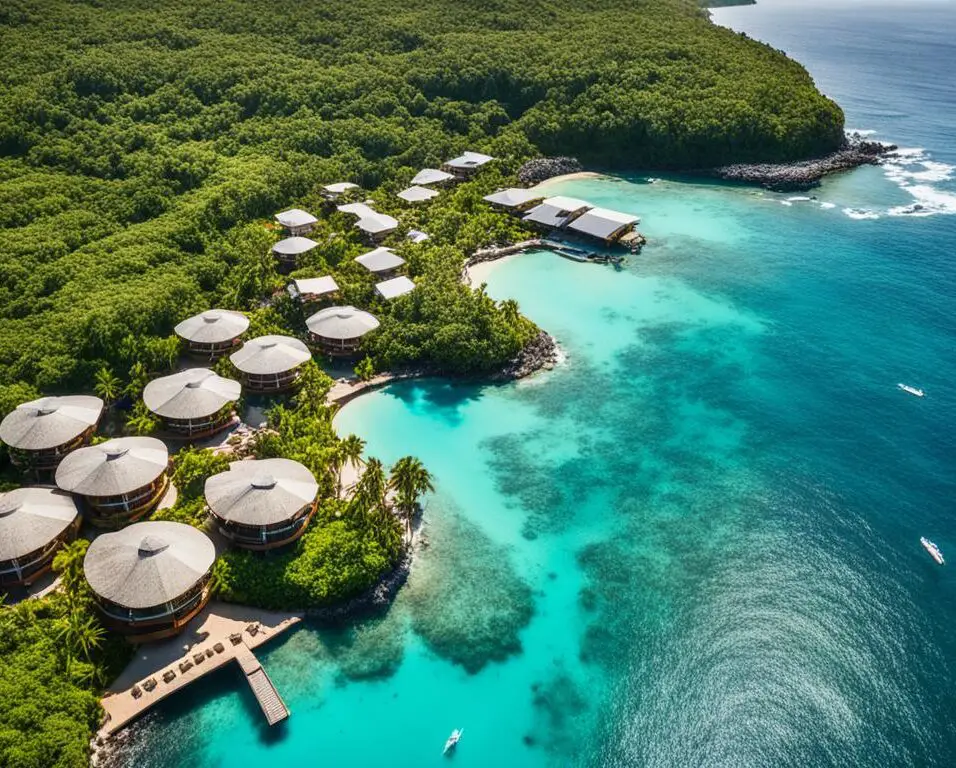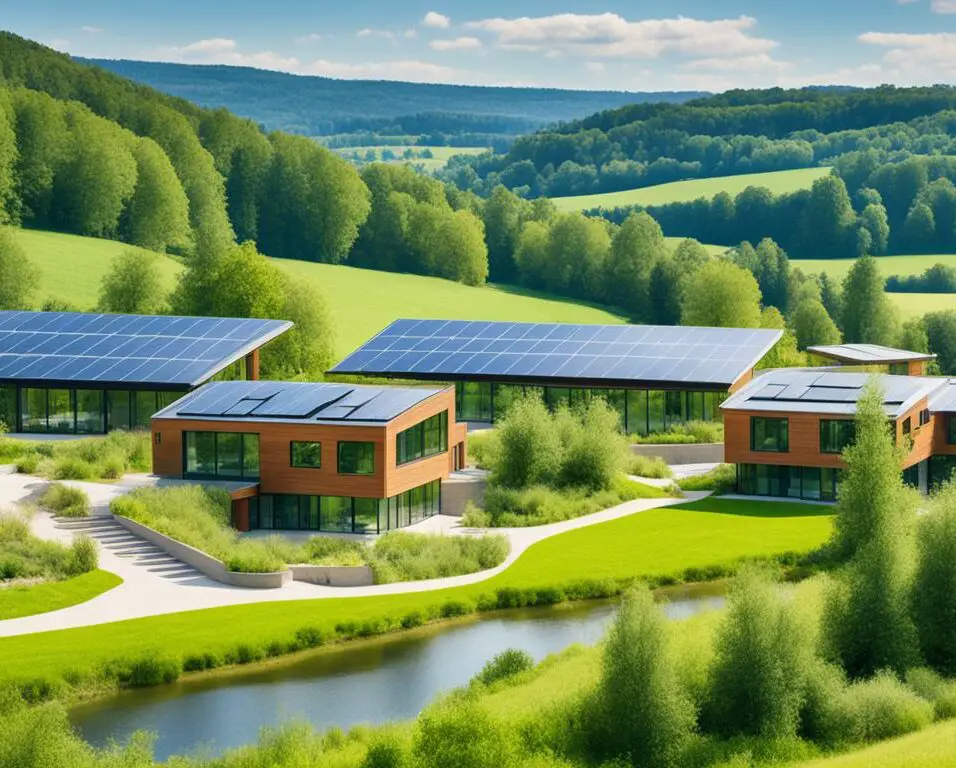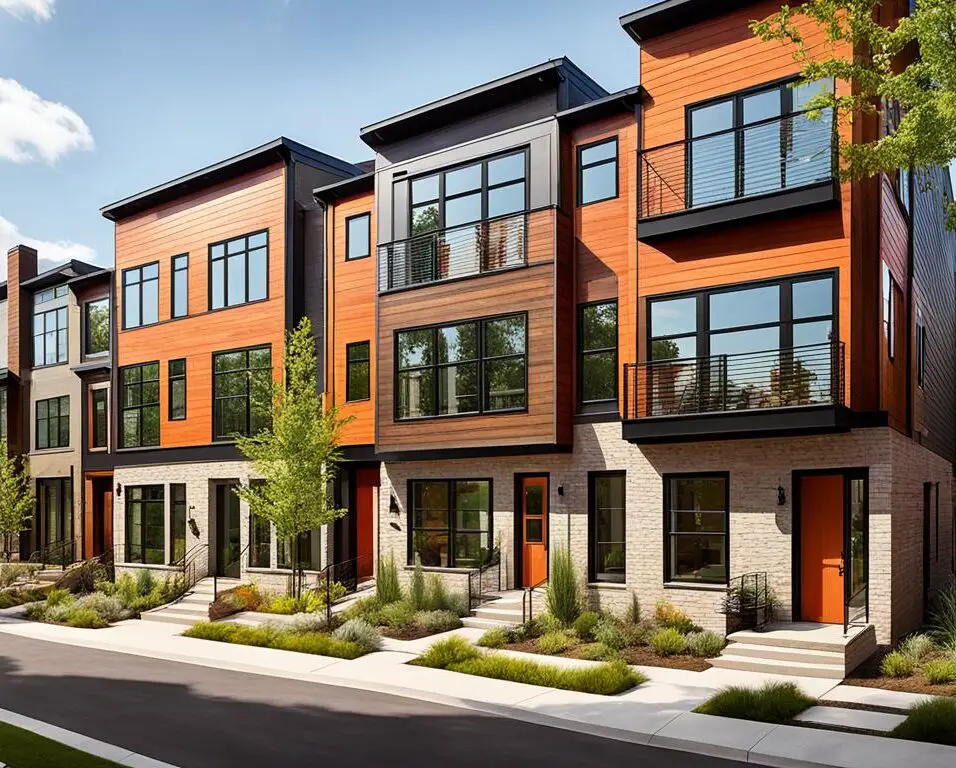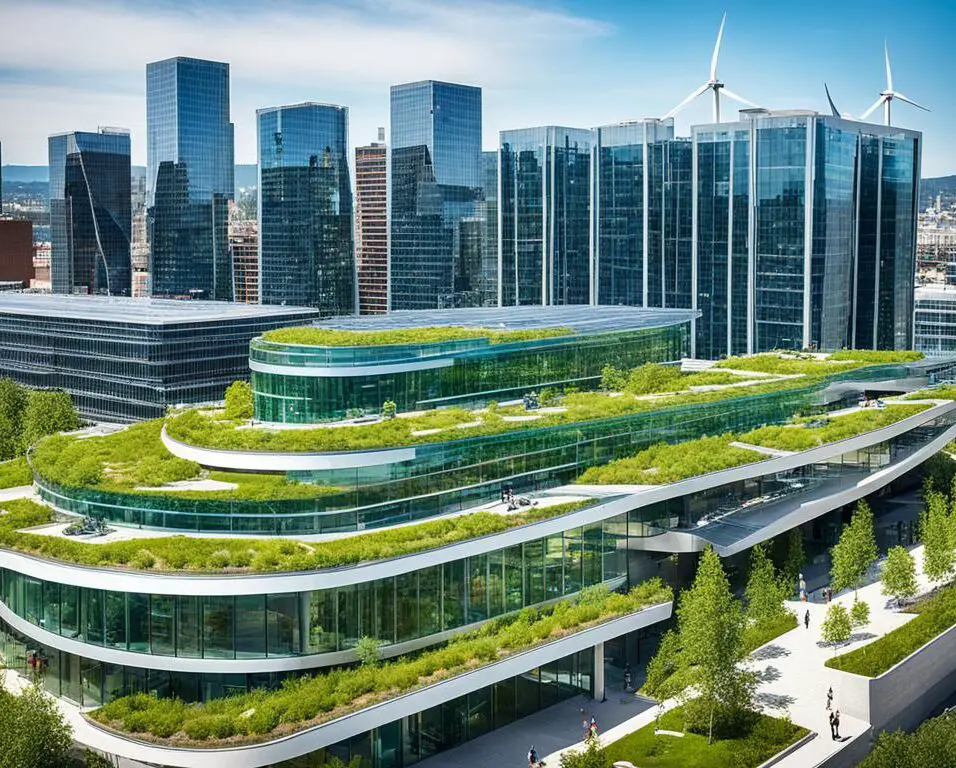Beach House Architecture: Designing Your Coastal Dream Home
When it comes to creating a serene coastal retreat, beach house architecture is the key. Designing a beach house allows you to envision and bring to life your dreams of a picturesque coastal home. Whether you choose to build from scratch or renovate an existing property, every aspect of the architecture holds significant importance in achieving that tranquil coastal haven.
Designing a beach house requires careful consideration of various factors, from the layout and materials to the color palette and outdoor spaces. By understanding the essentials of beach house architecture, you can create a space that not only captures the essence of coastal living but also reflects your personal vision of a dream home.
Key Takeaways:
- Beach house architecture is crucial in designing a coastal dream home that reflects your vision.
- Consider the layout, materials, color palette, and outdoor spaces when designing your beach house.
- Embrace the coastal aesthetic by incorporating elements that evoke tranquility and maximize natural light.
- Sustainability and resilience should be prioritized in beach house architecture, using eco-friendly materials and resilient design strategies.
- Designing a beach house provides a unique opportunity to create a space that captures the essence of coastal living and fulfills your dreams.
Embracing the Coastal Aesthetic in Beach House Design
When it comes to beach house architecture, embracing the coastal aesthetic is key. The design elements should reflect the natural beauty of the surroundings and evoke a sense of tranquility. Incorporating large windows to maximize natural light is essential, as well as choosing an open floor plan that allows for seamless indoor-outdoor living. From the use of natural materials like wood and stone to the incorporation of beach-inspired colors and textures, every detail should contribute to the overall coastal vibe.
Coastal aesthetics in beach house design are all about capturing the essence of the seaside environment. The goal is to create a space that not only harmonizes with the natural surroundings but also provides a serene retreat for relaxation and rejuvenation. To achieve this, various design elements come into play, from the selection of materials to the layout and color scheme.
One of the primary design elements in beach house architecture is the incorporation of natural light. By maximizing the use of windows and skylights, you can fill the space with an abundance of natural light, creating a bright and airy atmosphere. This not only enhances the overall aesthetic but also connects the indoors with the outdoors, blurring the boundaries between the two.
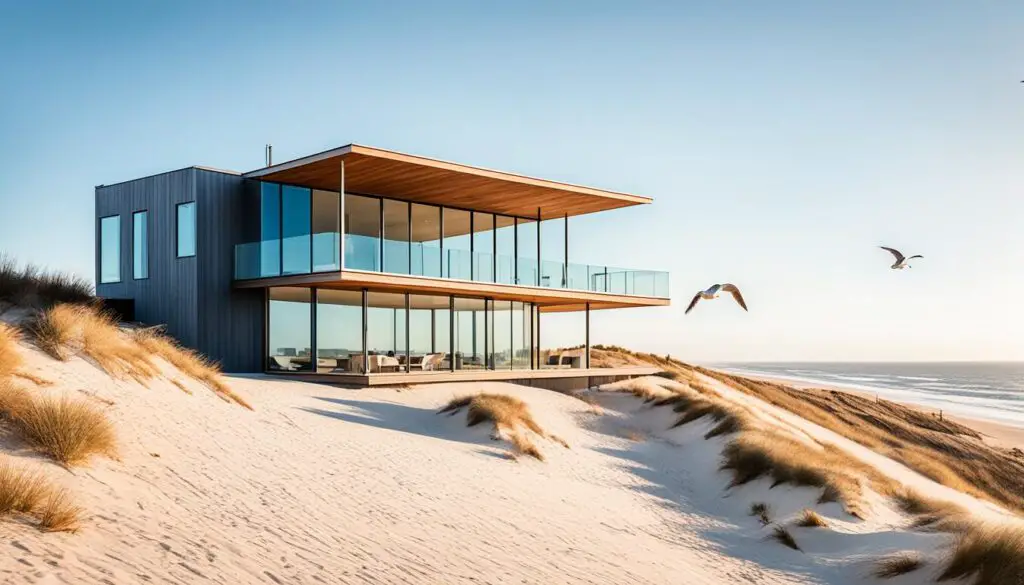
Another key feature of coastal aesthetics is an open floor plan. This design concept emphasizes seamless flow and connectivity between different areas of the home. By removing walls and barriers, an open floor plan allows for easy movement and creates a sense of spaciousness. It also promotes a relaxed and casual atmosphere, perfect for beachside living.
When it comes to materials, natural elements play a significant role in achieving a coastal aesthetic. Using materials like wood, stone, and rattan can bring a sense of organic warmth and texture to the space. These materials not only add visual interest but also create a connection to the natural environment.
Colors and textures inspired by the beach are also essential in beach house design. Incorporating a soft and neutral color palette with hints of blues, greens, and sandy tones can create a calming and inviting ambiance. Additionally, adding beach-inspired textures like seagrass rugs, linen curtains, and woven furniture can further enhance the coastal vibe.
In conclusion, embracing the coastal aesthetic is vital in beach house design. By incorporating design elements that reflect the natural beauty of the surroundings, maximizing natural light, choosing an open floor plan, and using materials and colors inspired by the beach, you can create a truly stunning coastal retreat. The next section will explore the sustainable and resilient design considerations for beach house architecture, ensuring that your dream coastal home is not only beautiful but also built to last.
Sustainable and Resilient Design Considerations for Beach House Architecture
Building a beach house involves more than just focusing on aesthetics. It’s crucial to prioritize the long-term sustainability and resilience of the design to create a truly remarkable coastal home. By incorporating sustainable design principles, eco-friendly materials, and energy-efficient features, you can minimize your environmental impact and contribute to a healthier planet.
In addition to sustainable design, beach house architecture should also take into account the potential risks associated with climate change. Rising sea levels and extreme weather events are becoming increasingly common, making resilient design strategies essential for coastal homes.
Sustainable Design
Sustainable design is the practice of using environmentally friendly materials and construction techniques to minimize negative impacts on the environment. Here are some key considerations for incorporating sustainable design in beach house architecture:
- Choose eco-friendly materials, such as reclaimed wood, bamboo, or recycled glass.
- Opt for energy-efficient appliances and lighting fixtures to reduce energy consumption.
- Implement passive design strategies to optimize natural ventilation and daylighting.
- Invest in renewable energy sources, such as solar panels, to power your beach house.
- Consider rainwater harvesting systems to reduce reliance on municipal water supplies.
Resilient Design
Resilient design aims to create structures that can withstand and recover from natural hazards. When designing a beach house, it’s important to consider the potential impacts of climate change and implement resilient design strategies to protect your investment. Here are some resilient design considerations for beach house architecture:
- Opt for elevated foundations to mitigate the risk of flooding and rising sea levels.
- Install hurricane-resistant windows and doors to protect against strong winds and flying debris.
- Choose durable building materials that can withstand coastal weather conditions, such as saltwater corrosion and high humidity.
- Implement effective stormwater management systems to prevent erosion and coastal erosion.
By combining sustainable and resilient design principles, you can create a beach house that not only harmonizes with the environment but also stands strong against future challenges. Investing in sustainable and resilient design not only ensures the longevity of your coastal dream home but also contributes to a more sustainable and resilient future.
| Benefits of Sustainable and Resilient Design | Sustainable Design | Resilient Design |
|---|---|---|
| Minimizes environmental impact | ✓ | – |
| Reduces energy consumption | ✓ | – |
| Enhances indoor comfort and well-being | ✓ | – |
| Protects against natural hazards | – | ✓ |
| Increases property value | ✓ | ✓ |
When it comes to beach house architecture, sustainable and resilient design considerations are essential for creating a home that not only embraces the beauty of the coast but also promotes environmental stewardship and long-term viability. By incorporating these design principles, you can enjoy the serenity of your coastal retreat while making a positive impact on the planet.
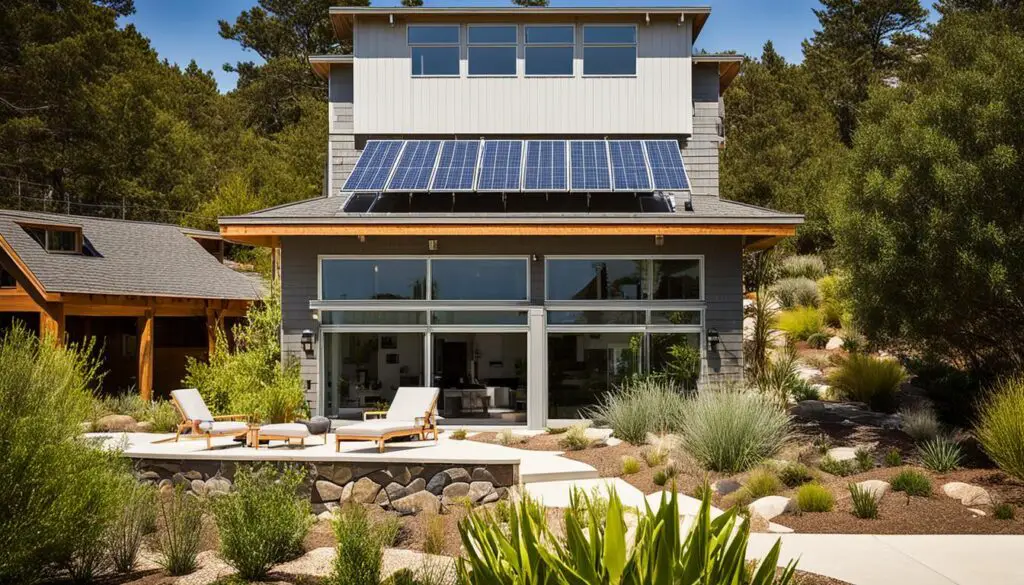
Conclusion
In conclusion, beach house architecture provides a unique opportunity to create your dream coastal retreat. By embracing the coastal aesthetic and incorporating sustainable and resilient design principles, you can design a beach house that captures the essence of coastal living while fulfilling your vision of the perfect home.
Whether you’re starting from scratch or renovating an existing property, these design tips will guide you in creating the beach house of your dreams. From maximizing natural light with large windows to utilizing open floor plans that seamlessly connect indoor and outdoor spaces, every detail contributes to the serene beauty of your coastal home.
By integrating eco-friendly materials, energy-efficient features, and resilient design strategies, you can ensure that your beach house is not only environmentally conscious but also built to withstand the test of time. From the initial design stages to the final touches, paying attention to every detail is crucial in creating a beach house that encapsulates the coastal lifestyle you’ve always envisioned.
So, get ready to dive into coastal living and enjoy the tranquil charm of your own beach house. With careful consideration of beach house architecture and design, you can bring your dream coastal retreat to life, embracing the beauty of the coast and creating a truly special place to call home.



